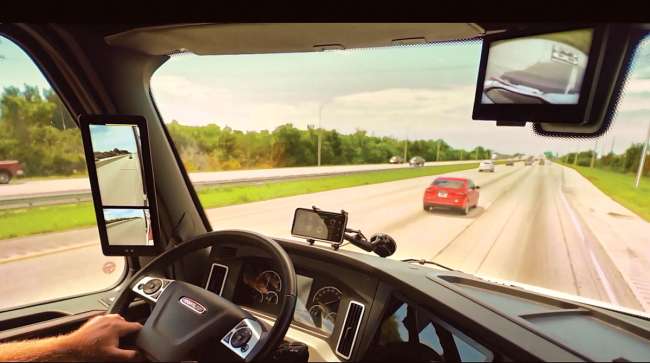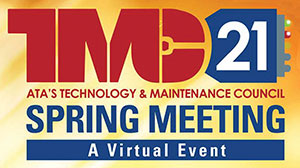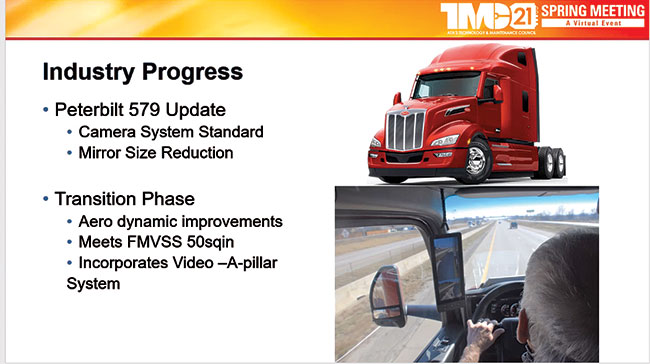Senior Reporter
TMC Plans Closer Look at Mirrorlike Camera Monitor Systems

[Stay on top of transportation news: Get TTNews in your inbox.]
Camera monitor systems that complement trucks’ rearview mirrors have a regulatory exemption, fleets are testing them and Peterbilt Motors Co. has already made them available to order on its new 579 model.
The increasing interest in the systems has prompted the Technology & Maintenance Council of American Trucking Associations to decide how it can help fleets understand how the camera systems would best fit into the truck cab environment.
TMC’s S.4 Cab & Controls Study Group is looking at a range of options, participants said April 14 during TMC’s virtual spring meeting.

Also at TMC 2021
The Federal Motor Carrier Safety Administration issued an exemption in 2019 that allows motor carriers to test CMS through Feb. 13, 2024. The agency noted CMS “likely achieve a level of safety equivalent to or greater than the level of safety provided by the [rearview mirror] regulation.”
The options include developing an engineering recommended practice, a maintenance recommended practice or both. The study group is also developing a white paper on the technology, meeting participants said.
A number of practical issues were discussed in the meeting.
For instance, the screens that display the camera images are mounted on the A pillars of the cab. In a few cases drivers in test fleets have reached up to them like they would for a grab handle typically located in the same place. Where would the grab handle be relocated to? Also, the display monitors are fixed, while the stature of drivers is not — making for awkward angles of vision, in some cases.
Also, some drivers reported experiencing the same disorienting visual sense people have experienced using a driving simulator.
In the eventuality CMS can replace rearview mirrors [now they must be an adjunct to them], participants said mirrors would still need to be stored on the truck and drivers trained in how to install them outside on the truck if CMS failed. Where to store the mirrors, especially in day cabs, was brought up.
On the plus side, early adopters have noted drivers said CMS provide better vision at night and in poor weather conditions, among other intended advantages.

S.4’s mission is to help improve the design and maintenance of cab components and systems to enhance the driver’s ability to properly, comfortably and economically operate highway vehicles.
The development of Recommended Practices is the primary reason for the existence of TMC Study Groups and Task Forces, according to TMC. It is through the development of Recommended Practices that TMC provides technology solutions for the trucking industry.
TMC’s Recommended Engineering Practices are voluntary practices that assist equipment users, vehicle/component manufacturers and other industry suppliers in the design, specification, construction and performance of commercial vehicle equipment.
TMC’s Recommended Maintenance Practices are voluntary practices that assist equipment users, vehicle/component manufacturers and other industry suppliers in the maintenance of commercial vehicles.
Want more news? Listen to today's daily briefing below or go here for more info:

